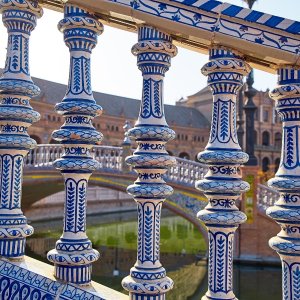Encar Garcia grew up in a small town near Barcelona, always surrounded by dogs, cats, horses and goats. When she thought about her future, she could only see herself rescuing animals. She studied biology, specialized in primatology and worked for eight years at the Barcelona Zoo taking care, for example, of the famous gorilla named Snowflake.
Love made her travel to Costa Rica, where she put down roots with Sandro Alviani. He was a herpetologist and shared Encar's passion for nature. Together, they founded a wildlife rescue center and enjoyed sixteen years of marriage, until Sandro passed away in 2016.
Question: What were the beginnings of the Jaguar Rescue Center like?
Answer: Right away people knew we were animal lovers and knew how to care for them. Then neighbors and everyone started bringing us animals they found injured. Even the Ministry of Environment and Energy (MINAE), which is the authority that controls wildlife in Costa Rica, brought animals to us. They don't have an official place to keep the animals.
Q: How did you get the funding to take care of all the animals that came to you?
A: I arrived in Costa Rica with practically nothing and Sandro had the property, which is where we created the rescue center. Now it is two hectares, but before it was a 3000 m2 lot and a house. At the beginning we had six sloths in the bathroom and a monkey in the dining room. We wanted to form an association and talk to the government to ask for help, but we never received a colón. I have friends in rescue centers in other parts of the world where the government gives them land, but we have had to buy and pay for everything without this help.
Thanks to the fact that we are in a tourist area, we started to receive visitors little by little. At the beginning they donated to us at will and then we put a price on it. We have always been getting by somehow.
Q: Now, how many animals and workers do you have in the center?
A: We have almost 300 animals, 26 employees and about 20 volunteers. We have grown a lot. We have the sanctuary, where animals that cannot be released because they have been electrocuted or have been pets are kept. For example, Paco is a spider monkey who lived twenty-seven years with a chain around his neck in a garage. These are the animals that the public can visit.
In the back of the forest, are the animals that have to be released. Here there are animals that come directly from the hospital, have undergone surgeries, and need time to recover before being released. Tourists never come here, because we don't want them to get used to people. We also have babies that we train and we keep them in this area so that they can be as healthy and releasable as possible.
Q: For knowing any specific animal, is it difficult to keep wild animals, such as sloths, in captivity? It may give the impression that, being calm, they are easier than monkeys, is this true?
A: For a wild animal it is almost never easy. Obviously sloths are more manageable than a monkey, they sleep a lot and socialize less. But, in terms of nutrition, they are very difficult animals, because they are folivorous, they have four stomach behaviors and they are fermenters.
For example, when someone rescues a sloth, takes it home, gives it cow's milk and then brings it to us, we know that it is an animal that is very likely to die. The milk ferments it and kills all the bacteria. They have a very characteristic flora that allows them to break down the cellulose of the leaves, it is a challenge to get this flora balanced. Antibiotics also kill them. When they have diarrhea, we use probiotics. They need to eat many different types of leaves and we have a person who goes every morning to get them. We now have almost 30 sloths in the infirmary, that's a lot of leaves. Also, depending on where the sloth has grown, it will prefer one type of leaf or another.
Q: And how are the sloth reintroductions working out? Do you monitor them?
A: All the sloths we release have a microchip that we can read when they come down to the ground. We also paint their nails with a special nail polish that lasts a long time and, with binoculars, we can observe them for quite a long time. In addition, here we are in the Caribbean and my neighbor makes wonderful braids. We put a braid in their own hair with colored threads that lasts up to 1 year. This way we can identify individuals. We go out to look for them in the forest at 5 o'clock in the morning. Luckily they don't have a very large territory and, although it sometimes takes them a week or two, they usually return to the same tree.
We released nine babies and we have only had problems with two. This is a very good result, because they are not adult animals that come to the center because of an injury, they are babies that we have raised for almost three years. We have them in a large facility in the forest and, during the last year, they get used to the rain and to being alone in that environment. We are super pleased with the success.
Q: To achieve all this, are the tourists who visit you still important?
A: Sure, tourism is the only way we can survive.














